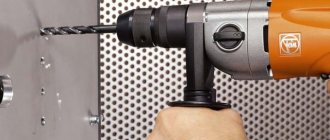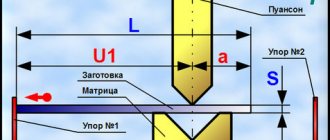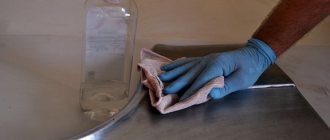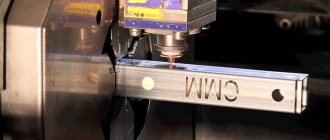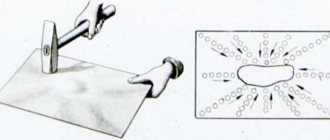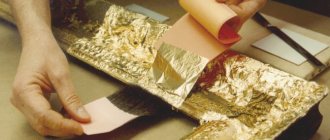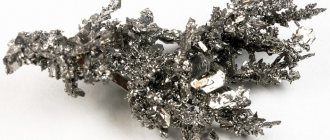Variety of low carbon steels
Low-carbon alloys contain impurities of various types. Increased sulfur and phosphorus content directly affect the properties of the metal and can lead to cracking during processing. Manganese and silicon do not reduce characteristics; they participate in the process of deoxidation and oxygen removal. Oxygen is removed to increase the strength of the material during hot deformation.
According to the degree of oxygen removal and deoxidation, steel is classified into:
- boiling;
- calm;
- semi-calm.
Low-alloy steels are an alloy with a low carbon content and small amounts of alloying additives, a total ratio of up to 4%. Alloying elements are needed to increase any performance properties while maintaining good welding characteristics. Increased resistance of the metal to corrosion and the ability to work at extremely low and high temperatures without deformation is achieved by alloying.
The quality of low-carbon steel is determined by the content of sulfur and phosphorus impurities in the alloy.
Based on the type of properties, they are distinguished:
- Usual quality. Sulfur in the composition - up to 0.06%, phosphorus - up to 0.07%.
- High quality steel. Mass fraction of sulfur - up to 0.04%, phosphorus - up to 0.035%.
- High quality steel. Sulfur content - up to 0.025%, phosphorus - up to 0.025%.
- Special quality. Minimum presence of impurities: permissible values of sulfur - up to 0.015%, phosphorus - up to 0.025%.
Carbon structural steel
The quality of rolled metal of this type can be ordinary or high. Material of ordinary quality is cheaper due to less purification from harmful components, and is distinguished by a large number of non-metallic impurities.
Gradation by quality indicator
Structural steel of ordinary quality, according to GOST 380-94, is subject to classification into three characteristic groups:
- A – alloys of this group do not require further heat treatment, which helps to preserve the original properties of the original metal. The marking is standard - the letters “St” plus numbers indicating the degree of strength and ductility – St1, St3, etc.
- B – the guaranteed chemical composition of the material of this group is amenable to deoxidation. The marking contains the letter “B” indicating the degree of deoxidation at the end - BST3sp (calm), BSt1kp (boiling). The number represents the percentage of carbon.
- B – a group of high-quality steels with a guaranteed chemical composition that can withstand mechanical processing. Marked with the letters VSt1, VSt3, etc. To produce metal products from this group, additional processing will be required, mainly by welding.
Rolled metal of ordinary high-quality composition is used for the manufacture of parts requiring welding, necessary for working under light load conditions. Structural steel of this type is mainly used in the automotive industry, as well as in the construction industry for mass-produced structures.
Ordinary metal of the appropriate grades is used for the production of nails, wire, and rivets. The structural material is used to produce axles and shafts that operate under light loads, various types of fasteners, and are used to produce shaped rolled products.
A high-quality type of carbon alloys must comply with GOST 1050-88; the production of alloys requires strict compliance with the parameters of composition, melting, and casting. Requirements for the characteristics of the chemical composition provide for the mandatory content of harmful additives - 0.04% each of sulfur and phosphorus. The marking of improved structural materials is located in the number range 08-85 (Steel08, Steel15, Steel80, etc.).
Restrictions
The carbon content, indicated by a digital index, imposes certain restrictions on the quality and scope of steel products.
| Name | Product properties, scope of application |
| Low carbon | Lightly loaded parts made of this material are characterized by low strength with high ductility and weldability. The products are suitable for cold stamping, excluding heat treatment. The metal alloy is used to produce complex parts for automobiles and critical welded structures. |
| Medium carbon | Medium-carbon structural steel becomes after improvement by hardening and hot tempering (up to 650°C). These indicators increase the strength of steel parts, but reduce ductility, which allows cutting. High-strength material improved by hardening is used in mechanical engineering |
| High carbon | High carbon materials are characterized by a high percentage of manganese. This type of metal is used to produce products that require increased elasticity and wear resistance (springs, springs). After annealing, the material lends itself well to cutting |
| Quality | Construction material of this category contains an increased proportion of impurities - sulfur-phosphorus, lead additives. High-quality metal is used to produce parts that undergo advanced processing that does not harm metal-cutting tools. This is a class of automatic steels enriched with sulfur, phosphorus, and lead, intended for use on automatic machines |
To increase the wear resistance of metal products, graphitization, cold hardening, and surfacing are used. Such methods of improving the parameters of structural steel make it possible to increase the hardness of the material and its resistance to wear.
Application area
The specific area of application of carbon metal products is determined by its characteristics.
| Structural alloys | Properties of steels, areas of application |
| Mechanical Engineering | Used for automobile production due to its high mechanical properties that extend to the entire material. Machine parts are reliable, resist heavy loads and impacts well, maintaining increased strength |
| Building | Carbon alloys are used to make bridge structures, trusses, and equipment for oil and gas pipelines. The main requirement for structural steels of this type is good weldability with a small volume of alloying components. Alloying with silicon and manganese contributes to increasing strength. |
| Reinforcing | Reinforced concrete structures are reinforced with steel reinforcement, which helps to increase their strength when exposed to loads. This type of metal is represented by rods (smooth, profiled) and wire. Depending on the strength requirements for structures (pre-stressed or unstressed), steel reinforcement is strengthened by heat treatment |
| Spring | The properties of elasticity are used to make spring steel. The main requirement for structural metal is increased fluidity, which is achieved by hardening and tempering at temperatures up to 400°C. This temperature level provides the highest elastic limit value. Structural steels for especially loaded springs are reinforced with the addition of vanadium and chromium |
| Ball bearing | The products are subject to special hardness requirements due to high local loads. For this reason, high-carbon steel is chosen for the production of rolled metal. Ease of hardening at low temperatures and the use of oil is ensured by alloying with chromium; to improve hardening, silicon-manganese elements are introduced |
| Cementable | This type contains 0.1-0.25% carbon, which allows them to be used for the production of products subject to cementation. Parts of the cemented and cyanidated class (bolts, gears, nuts, etc.) are small in size with increased strength due to the introduction of useful additives |
Classification of regular quality steel
Properties of ordinary quality steels
Within the quality group, low-carbon steel of ordinary quality is further divided into three categories, designated by capital letters A, B, C.
Low-carbon steel of ordinary quality of group “A” contains alloys that differ in mechanical properties, and is found in industry in the form of sheet, profile low-carbon rolled products.
Group “B” is classified according to chemical qualities, processed under pressure under high heat, blanks are stamped and forged.
Low-carbon steels of group “B” are determined by their physical properties and chemical composition.
Features of Alloy Steel
Alloy additives are added to this type of steel to increase strength and impart anti-corrosion properties.
In order to understand the chemical composition of a given type of steel, it is definitely marked:
- The first digit in the alloy steel designation indicates the amount of carbon;
- Next, the letters indicate the alloying elements that make up the steel;
- The following numbers show the mass fraction of these elements.
The alloying elements used for this type of steel are: Chromium (Cr), Manganese (Mn), Nickel (Ni), Nitrogen (N), Molybdenum (Mo) and Vanadium (V).
Application of alloy steel
Alloy steel has found wide application. It is used in the manufacture of high strength and precision parts for machines and other mechanisms designed for heavy loads: shafts, axles, levers, pistons, bearings, high-strength cutting elements for industrial use, elements of electrical equipment, etc.
The main methods for producing low-carbon alloys
When produced, all alloys undergo the same technological stages and additional processing. The melting furnace is loaded with raw materials, charge, heated until melted, and excess impurities are removed. Additional processing depends on the specific composition of the product, the desired chemical and physical properties.
According to production technology and equipment, alloys are obtained:
- oxygen-converter smelting method;
- open-hearth method of production;
- electrothermal production method.
Oxygen-converter method
This method of producing a low-carbon alloy is named after two components of the technology. Oxygen in the air oxidizes excess carbon and impurities in the converter furnace. The converter furnace has a volume of 50–60 tons. The molten raw materials, the charge, are blown with heated oxygen under pressure. The convector walls are pear-shaped and made of metal with additional lining. The lining material chemically participates in the smelting process, reacting with the molten raw material.
Open hearth method
Open hearth furnaces are distinguished by the large size of their melting baths, with a capacity of up to 500 tons of products.
The burning of carbon and impurities also occurs with oxygen, but oxygen is obtained not only from the air. Additionally, the charge is enriched with iron ore and scrap covered with rust. Iron oxides, participating in the process, release oxygen. Regenerator chambers preheat the combustible gas and air and alternately release the contents through the melting bath. The process takes place over 6–7 hours; upon completion, heating is stopped and deoxidizing agents are added.
Electrothermal method
This method allows you to obtain precisely specified physical and chemical properties; it is used only for the production of high-quality alloys. The large energy consumption during heat treatment, up to 800 kW per 1 ton of steel, must be economically justified. The oven temperature reaches 1650 degrees, the bath capacity is 0.5–180 tons.
At high temperatures, sulfur and phosphorus are removed almost completely, and refractory raw materials are melted. Chemical reactions during production are similar to the open-hearth method.
Pros and cons of cold rolled steel
Cold rolled steel has many advantages. The main advantage of this method is that cold rolled steel is approximately 20% stronger than its hot rolled counterpart. Using heat to roll steel weakens the metal. If high temperatures are not used, steel retains its strength. Thus, anything that contains cold-rolled steel parts tends to last longer than something that contains parts of its hot-rolled counterpart. Another advantage of cold rolled steel is its appearance. It looks modern and finished, unlike its hot-rolled counterpart, which often looks ragged. But all this comes at a price.
The only disadvantage of cold rolled steel is that it costs more than hot rolled steel.
The main properties of low-carbon steels
Low-carbon steel is characterized by low strength with significant toughness and ductility. The alloy is easily processed by hot deformation, cold drawing, and welds well.
An increase in strength characteristics is achieved by carburization - saturation of the surface layers with carbon, after which the surface layers of the alloy are hardened, acquiring the necessary strength. Induction and electric furnaces are used for surface hardening of low-alloy steel. The inner, not enriched, layers remain soft, viscous, and do not lose plasticity due to the unchanged amount of carbon.
What is the key advantage of cold rolled steel?
Cold rolled steel is produced on cold reduction machines, where the material is cooled to near room temperature, followed by annealing and/or skin pass rolling. This process produces steel with a wide range of surface finishes and superior tolerances, concentricity and straightness compared to hot rolled steel. Cold rolled steel contains low carbon content and the annealing method makes it softer than hot rolled steel. Cold rolled steel products are typically produced in sheets, strips, rods and rods. Cold rolled products are typically smaller than the same product produced by the hot rolled process.
Cold rolled steel sheets and strips are available in semi-hard, semi-hard, quarter-hard and tempered grades. Among these conditions, rolling with full hardness reduces the thickness by almost 50%, while other conditions are thicker. Rolled steel billet is commonly used in subsequent cold working methods where good ductility is required.
Other shapes can be cold rolled if the cross-section is relatively uniform and the cross-section is relatively small. Cold rolled profiles are processed in a series of forming operations. This is typically done along the sizing, staking, roughing, semi-finishing, semi-finishing and finishing lines.
Cold rolled steel is used to produce a variety of products, from household appliances such as refrigerators and washing machines, to industrial equipment, architectural components, automobiles and various construction-related products. Cold rolled steel is an indispensable material in modern society. Cold rolled steel has anti-corrosion properties. A smoother surface is more resistant to corrosion.
You can buy cold-rolled metal products on our metal warehouse website through the product catalog. We offer only high-quality cold-rolled metal from the best manufacturers in Russia with free delivery within the Ring Road.
Marking of low-carbon steels and its meaning
Low-carbon steel of ordinary quality is marked with the letter value “St”, which varies according to the qualities:
- The digital value shows the amount of carbon in the alloy. Dividing the value by 100 gives the carbon content as a percentage.
- The initial letter symbols of the marking “B” or “C” indicate membership in the quality group.
- The absence of a letter designation indicates that it belongs to category “A”.
- The combination “KP” indicates a boiling composition due to deoxidation.
- The combination “PS” indicates a semi-quiet alloy; the absence of a designation indicates a calm steel.
- The letter and number combination written last on the stamp indicates the presence of impurities in the composition and their percentage.
- High-quality low-carbon alloys are not marked with the letter combination “St”.
Additionally, there is a classification by color and letter marking of special-purpose alloys. For example, the marking “STZ bridge” indicates an alloy intended for use in the manufacture of bridge structures.
Features and application of low alloy steel
Low-alloy steel contains alloy elements, which give the material high anti-corrosion properties.
The main components of such steel are Carbon (C), Silicon (Si), Manganese (Mn), and additional elements can be Aluminum (Al), Titanium (Ti), Vanadium (V), Niobium (Nb) and Nitrogen (N).
Low-alloy steel is not coated with zinc; ordinary painting is sufficient for the long service life of rolled metal products made from it.
Rolled metal made from low-alloy steel is given preference in construction, using it in low temperature conditions.
If you want to buy rolled metal , check out the wholesale prices for rolled metal and the retail cost of rolled metal, or immediately contact us by phone from the Contacts page, our specialists will advise and help you place your order.
Scope of application
Low-carbon alloys are widely used in various areas of industry and production.
The following groups of products are classified by profile type:
- Flat sheet metal. Corrugated, thick-sheet, thin-sheet, wide-strip, strip products.
- Equal and unequal corner profiles.
- Channels.
- Pipes, round, square, rectangular section.
- Tauris, I-beams. I-beams, wide flange, ordinary.
- Profiled metal sheet of various thicknesses.
The largest product segment is flat rolled sheets and strips. Cold stamping produces high-strength wire, springs, springs for mechanical engineering. Parts and workpieces are easily welded and are widely used in the construction industry and the automotive industry. Low-carbon alloys are used to make body parts, axles, fuel tanks, agricultural machine frames and many other parts that are constantly encountered in everyday life.
Use of cold rolled steel
The main disadvantage of cold rolling is the limited shapes. Cold rolled steel products are usually round, square or flat. There are other forms, but they are just variations of the forms mentioned earlier. Cold rolling also limits the size of the finished product, unlike the hot rolling process.
Typical cold rolled products include rod, rod, sheet and strip. Cold rolled steel, being extremely ductile, is usually used for moderate drawing. This makes them extremely useful for projects where accuracy is important. Cold rolled steel is very ductile. It is used for metal equipment, as well as for metal furniture. It is also often used to make school lockers or garages, industrial buildings and steel sheds. The interior and exterior parts of vehicles are also made from cold rolled steel.
Manufactured products
There are several groups of steel products:
- Sheet steel. Subtypes: thick-sheet (GOST 19903-74), thin-sheet (GOST 19904-74), wide-sheet (GOST 8200-70), strip (GOST 103-76), corrugated (GOST 8568-78)
- Angle profiles. Equal flanges (GOST 8509-93), unequal flanges (GOST 8510-86).
- Channels (GOST 8240-93).
- I-beams. Ordinary I-beams (GOST 8239-89), wide-flange I-beams (GOST 26020-83, STO ASChM 20-93).
- Pipes.
- Profiled flooring.
Secondary profiles are added to this list, which are formed through welding and machining.
Classification by degree of deoxidation
The division of carbon steels into various types is influenced, among other things, by such a parameter as the degree of deoxidation. Depending on this parameter, carbon steel alloys are divided into calm, semi-calm and boiling.
Quiet steels have a more homogeneous internal structure, the deoxidation of which is carried out by adding ferrosilicon, ferromanganese and aluminum to the molten metal. Due to the fact that the alloys of this category were completely deoxidized in the furnace, their composition does not contain ferrous oxide. Residual aluminum, which inhibits grain growth, gives such steels a fine-grained structure. The combination of a fine-grained structure and the almost complete absence of dissolved gases allows the formation of high-quality metal from which the most critical parts and structures can be made. Along with all their advantages, carbon steel alloys of the quiet category also have one significant drawback - their smelting is quite expensive.
The structure of a steel ingot depends on the degree of deoxidation of the steel
Cheaper, but also of lower quality, are boiling carbon alloys, the smelting of which uses a minimum amount of special additives. In the internal structure of such steel, due to the fact that the process of its deoxidation in the furnace was not completed, there are dissolved gases that negatively affect the characteristics of the metal. Thus, the nitrogen contained in such steels has a bad effect on their weldability, provoking the formation of cracks in the weld area. The developed segregation in the structure of these steel alloys leads to the fact that the rolled metal that is made from them has heterogeneity both in its structure and in its mechanical characteristics.
Semi-quiet steels occupy an intermediate position both in their properties and in the degree of deoxidation. Before pouring into molds, a small amount of deoxidizing agents is introduced into their composition, due to which the metal hardens practically without boiling, but the process of gas evolution in it continues. As a result, a casting is formed, the structure of which contains fewer gas bubbles than in boiling steels. Such internal pores are almost completely welded during the subsequent rolling of the metal. Most semi-mild carbon steels are used as structural materials.
You can familiarize yourself with all GOST requirements for carbon steel by downloading this document in pdf format from the link below.
Download GOST 380-2005 Carbon steel of ordinary quality. Stamps

